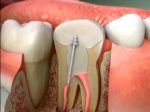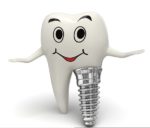5 Easy Steps to Help Your Puppy’s Teeth Fall Out Painlessly
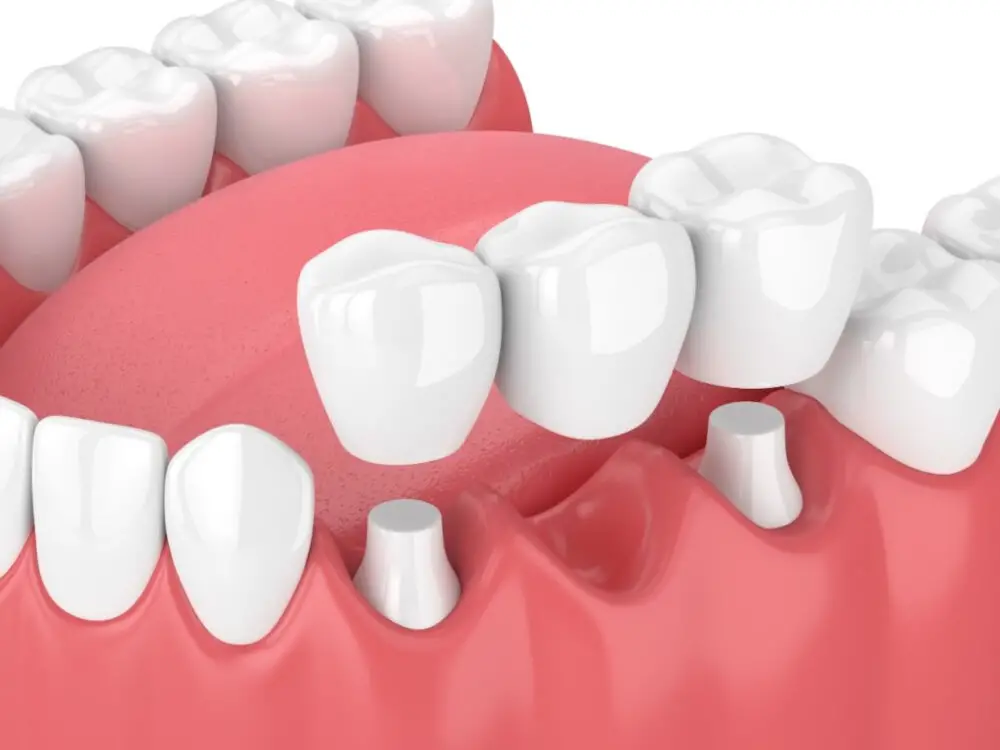
As a pet owner, it’s essential to take care of the overall health and well-being of your furry friend. One of the most crucial aspects of puppy care is ensuring proper dental hygiene. Just like humans, dogs also experience teeth fall out as they grow. However, it can be a painful process for them, and they may require extra attention and care during this phase. Fortunately, with some simple steps, you can help your puppy’s teeth fall out painlessly, ensuring their comfort and health. The teething process in puppies typically begins around 3-4 months and can last up to 7-8 months. During this time, puppies experience discomfort due to the new teeth emerging and the old ones falling out. It’s crucial to monitor your puppy’s behavior, as they may experience pain, loss of appetite, and even behavioral changes during this period. With the following five easy steps, you can help your puppy go through this phase smoothly and ensure their dental health for the long run.
Step 1: Provide Appropriate Chew Toys

When it comes to helping your puppy’s teeth fall out painlessly, it’s important to start with the basics. And one of the most basic things you can do is to provide appropriate chew toys. Chew toys serve several purposes: they help alleviate the discomfort of teething, they keep your puppy’s teeth and gums healthy, and they give your puppy an outlet for their natural chewing instincts. But it’s important to choose the right kind of chew toys. Avoid toys that are too hard or too small, as these can be hazardous to your puppy’s dental health. Instead, look for toys that are specifically designed for teething puppies, such as soft rubber toys or toys that can be frozen. These toys will be gentle on your puppy’s gums while still providing the satisfying chewing experience they crave. Of course, simply providing chew toys isn’t enough. You also need to encourage your puppy to use them. One way to do this is to make sure the toys are always available and easily accessible. Keep them in areas where your puppy spends a lot of time, such as their crate or playpen. You can also try rubbing a bit of peanut butter or other tasty treat on the toys to make them more appealing. And don’t forget to praise your puppy when they use the toys! Positive reinforcement is a powerful tool when it comes to shaping your puppy’s behavior, and praising them for chewing on their toys will help make it a habit. By providing appropriate chew toys and encouraging your puppy to use them, you can help ensure that their teething process is as painless and healthy as possible.
Chew toys are crucial for puppies as they not only provide entertainment but also help in their dental development. Puppies have a natural instinct to chew, and chew toys allow them to exercise this behavior without causing harm to themselves or your furniture. Additionally, chewing on toys helps to clean their teeth and massage their gums, promoting healthy teeth and reducing the risk of dental problems in the future. Therefore, providing appropriate chew toys can actually save you time and money in the long run by preventing dental issues and destructive behavior. Be sure to choose safe and durable toys for your puppy to enjoy.
It is important to provide your puppy with safe chew toys to promote healthy teeth and gums. Hard rubber toys, such as Kongs, are a great option as they can withstand the pressure of your pup’s teeth without breaking apart. Additionally, rope toys can help to clean teeth and massage gums, but be sure to monitor your puppy while they are playing to ensure they do not ingest any strands. Avoid giving your puppy toys that can quickly break apart, such as plush toys or rawhide, as they can pose a choking hazard or cause intestinal blockages. Always choose chew toys that are appropriate for your puppy’s age, size, and chewing habits to ensure their safety.
Chew toys are an excellent tool to help loosen baby teeth in puppies. As puppies chew on these toys, the pressure and friction help to wiggle their teeth, making them looser and easier to fall out. The act of chewing also helps to alleviate any discomfort or pain caused by the emerging adult teeth underneath. It’s essential to choose appropriate chew toys that are soft and pliable, avoiding hard or sharp toys that can damage the puppy’s teeth. Regularly providing chew toys to your puppy can help them develop strong teeth and jaws while making the teething process less painful and stressful for both you and your furry friend.
Step 2: Incorporate Wet Food into Your Puppy’s Diet

Incorporating wet food into your puppy’s diet is the second step in helping their teeth fall out painlessly. Wet food is an excellent addition to your puppy’s diet as it contains more moisture than dry kibble. Moisture is essential for your puppy’s dental health, as it helps keep their mouth clean and prevents the buildup of harmful bacteria. Wet food also tends to be more palatable than dry kibble, making it an excellent option for picky eaters. When incorporating wet food into your puppy’s diet, it’s essential to make sure that you’re feeding them a high-quality brand that contains all the necessary nutrients. You should also pay attention to the serving size and not overfeed your puppy, as this can lead to weight gain and other health issues. Gradually introducing wet food into your puppy’s diet is also crucial, as sudden changes to their diet can cause digestive upset. By following these guidelines, you can help ensure that your puppy’s teeth fall out painlessly and that they maintain optimal dental health throughout their life.
Wet food is an excellent option for maintaining good oral health in dogs. Unlike dry kibble, wet food is soft and moist, which makes it easier for your puppy to chew and swallow. Additionally, wet food contains a higher moisture content, which helps to keep your pup hydrated and prevent dehydration-related oral problems such as dry mouth. Wet food also tends to be less sticky than dry kibble, meaning it is less likely to get lodged in between your puppy’s teeth and cause plaque buildup. Overall, incorporating wet food into your puppy’s diet can help to promote good oral health and make the process of losing their baby teeth a painless one.
Wet food can play a crucial role in reducing the discomfort associated with sore gums in puppies. Since wet food has a high moisture content, it is much easier to chew and swallow, and also provides a soothing sensation to the gums. Additionally, wet food has a softer texture compared to dry kibble, which greatly reduces the strain on the jaw and gums while eating. Moreover, wet food contains a higher percentage of protein and other essential nutrients that are essential for the growth and development of teeth and bones in puppies. Therefore, incorporating wet food into your puppy’s diet can be an effective way to alleviate the discomfort associated with teething and promote optimal dental health.
Incorporating wet food into your puppy’s diet can be a great way to help their teeth fall out painlessly. First, make sure to choose a high-quality wet food that is specifically formulated for puppies. Next, gradually introduce the wet food into their diet, mixing it with their dry kibble. This will help them adjust to the new texture and flavor. Additionally, be sure to monitor their intake and adjust portions as needed to maintain a healthy weight. Finally, always provide fresh water for your puppy to drink alongside their wet food. By following these tips, you can help your puppy enjoy the benefits of wet food while promoting healthy teeth and gums.
Step 3: Use Cold Compresses to Soothe Sore Gums
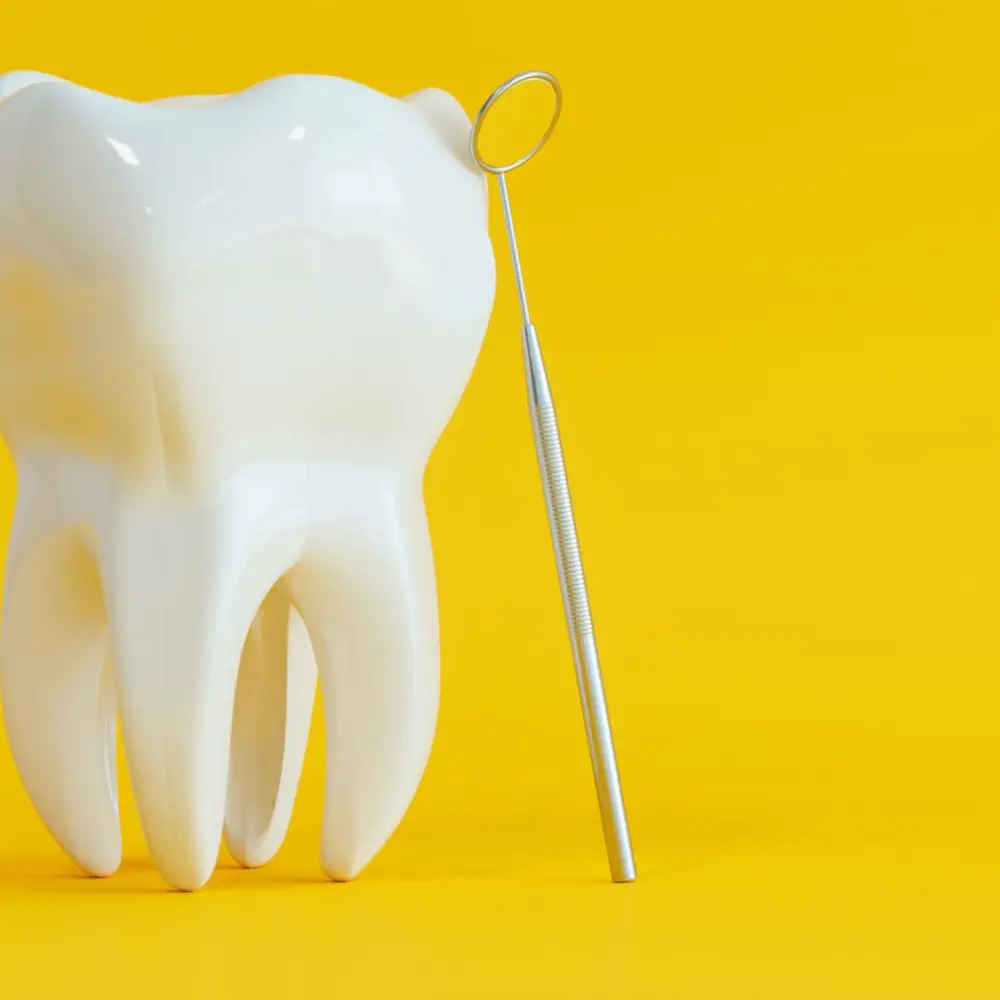
Step 3 of the article \5 Easy Steps to Help Your Puppy’s Teeth Fall Out Painlessly\ recommends using cold compresses to soothe sore gums. This step is crucial in alleviating the discomfort that puppies experience when their teeth are falling out. Cold compresses can help reduce inflammation, numb the pain, and provide a sense of relief to your furry friend. You can use a variety of cold compresses, including ice packs, frozen vegetables, or a damp washcloth that has been placed in the freezer. Make sure to wrap the compress in a towel or cloth to prevent direct contact with the skin, which can cause frostbite. It’s important to note that you should never use a hot compress to soothe sore gums, as this can worsen the inflammation and cause more pain. Cold compresses work by constricting blood vessels, which reduces swelling and numbs the area. You can apply the cold compress to your puppy’s mouth for 10-15 minutes at a time, several times a day, as needed. If your puppy seems uncomfortable with the cold compress, try wrapping it in a towel or cloth to make it more comfortable for them. By following this step, you can help your puppy feel more comfortable during this difficult time and ensure that their teeth fall out painlessly.
Cold compresses are an effective way to alleviate sore gums in puppies. Applying a cold compress to the affected area can help reduce inflammation and numb the pain. This method works by constricting the blood vessels in the gums, which can reduce swelling and discomfort. Cold compresses are also easy to make at home with items you may already have, such as a clean washcloth or a plastic bag filled with ice. Using cold compresses regularly can help your puppy feel more comfortable during the teething process and prevent them from chewing on objects to relieve their discomfort.
Using cold compresses is a great way to ease the pain and reduce swelling for your furry friend’s teeth. To make a cold compress, simply wrap a few ice cubes or a pack of frozen vegetables in a towel or cloth. Place the compress on the affected area for 10-15 minutes at a time. It’s important to remember not to use anything too cold, as this could cause damage to your puppy’s delicate mouth. You can also try adding a few drops of lavender or chamomile essential oil to the compress to help your puppy relax. Cold compresses can be used several times a day, but it’s important to monitor your puppy’s behavior to ensure they are not becoming too uncomfortable with the cold temperature.
In addition to providing cold or frozen toys to alleviate sore gums, there are other methods that can be used to soothe your puppy’s discomfort. Massaging the gums with a clean finger or a soft-bristled brush can help increase blood flow and reduce inflammation. Natural remedies such as chamomile tea or aloe vera can also be applied topically to the gums for their soothing properties. Additionally, incorporating a healthy and balanced diet with appropriate chew toys can promote healthy teeth and gums, reducing the likelihood of discomfort in the first place. It’s important to keep a close eye on your puppy and provide comfort and care as needed during this teething phase.
Step 4: Don’t Pull Out Loose Teeth
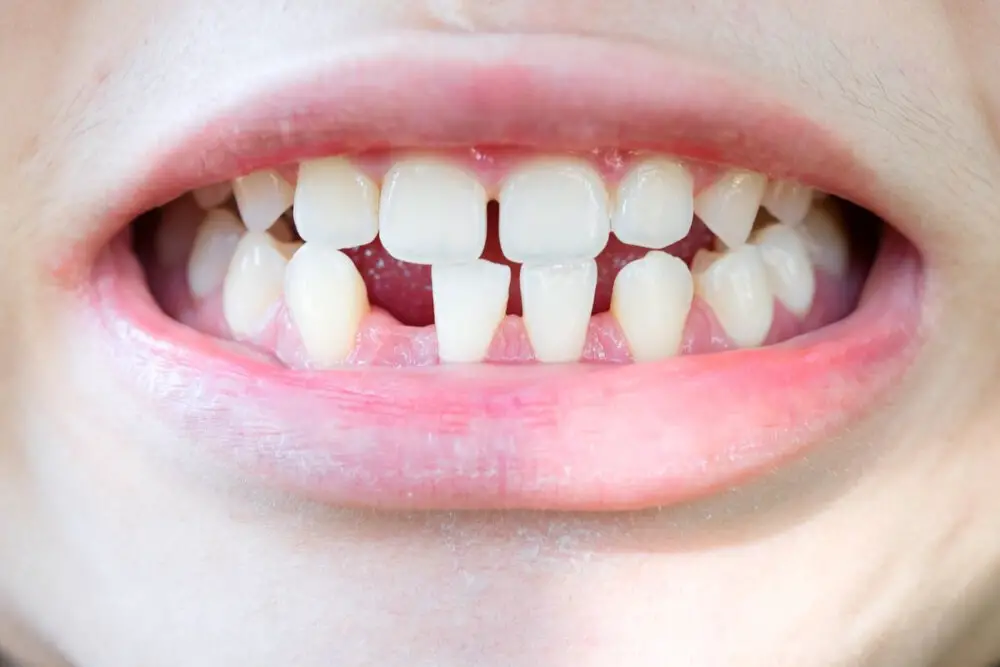
Step 4 of the article \5 Easy Steps to Help Your Puppy’s Teeth Fall Out Painlessly\ advises pet owners not to pull out their puppy’s loose teeth. This is because pulling out teeth that are not quite ready to come out can lead to pain and discomfort for the puppy. Additionally, pulling out teeth prematurely can cause the puppy’s gums to bleed and become infected, which can lead to more serious dental issues down the line. It is important to remember that puppies’ teeth fall out naturally as part of their growth and development. While it may be tempting to help the process along by pulling out loose teeth, it is best to let nature take its course. Instead, pet owners can help their puppies by providing them with appropriate chew toys and dental treats that can help loosen their teeth naturally. By following this advice, pet owners can help ensure that their puppies’ teeth fall out painlessly and without complications.
Pulling out loose teeth may seem like a quick and easy way to help your puppy’s teeth fall out painlessly, but it can actually be harmful. When you forcefully remove a loose tooth, you risk damaging the surrounding gums and tissues. This can cause bleeding, pain, and infection. Additionally, if the tooth is not ready to come out, it may not grow back properly or at all, leading to oral health problems later in life. It’s important to let your puppy’s teeth fall out naturally and only intervene if there are signs of pain or infection.
The natural process of baby teeth falling out is a significant milestone in a child’s growth and development. Typically, this process begins around the age of six or seven, when the first permanent teeth start to emerge. As the permanent teeth grow, they push against the roots of the baby teeth, causing them to loosen and eventually fall out. This process can take several months to complete, and during this time, children may experience discomfort and pain. However, there are steps that parents can take to help ease this process and ensure their child’s baby teeth fall out painlessly.
If you’re a pet owner, it’s essential to monitor your puppy’s loose teeth as they grow. One tip is to keep an eye out for unusual bleeding or swelling around the loose tooth. You can also check for signs of discomfort or pain when your puppy eats or chews on toys. Another tip is to encourage your puppy to chew on hard toys or bones to help loosen their teeth naturally. It’s also crucial to maintain your puppy’s dental hygiene by brushing their teeth regularly to prevent any potential dental issues. Lastly, consult with your veterinarian if you notice any concerning symptoms or if your puppy’s teeth don’t fall out naturally.
Step 5: Consult with Your Veterinarian

Consulting with your veterinarian is an essential step to ensure your puppy’s teeth fall out painlessly. This is because your veterinarian is the best person to advise you on your puppy’s dental health. They can also provide you with helpful tips on how to care for your puppy’s teeth and gums. Moreover, they can check for any underlying dental problems that could cause pain or discomfort to your puppy during the teething process. During your visit to the veterinarian, they will examine your puppy’s teeth to ensure they are healthy and growing correctly. They may also recommend a dental cleaning or provide dental care advice, such as the right kind of toothbrush and toothpaste to use. Additionally, they can suggest appropriate chew toys and treats that will help your puppy’s teeth fall out painlessly, reducing the risk of dental problems in the future. Overall, consulting with your veterinarian is an essential step in caring for your puppy’s dental health and ensuring they experience a painless teething process.
Consulting with a veterinarian is crucial when it comes to your puppy’s health, especially their teeth. A veterinarian is a trained professional who can provide expert advice and guidance on how to take care of your puppy’s teeth and ensure they fall out painlessly. They can also detect any potential dental problems early on, such as misaligned teeth, gum disease, or tooth decay, and recommend appropriate treatment. Regular check-ups with a veterinarian can help prevent dental issues from becoming more severe, and maintain your puppy’s overall health and well-being. By consulting with a veterinarian, you can ensure that your puppy’s teeth are healthy and that they can grow up to be happy and comfortable.
As a pet owner, it is essential to be vigilant about your puppy’s health to avoid any underlying issues. One of the signs that may indicate an underlying problem is a reluctance to eat. If your puppy is not eating, it may be an indication of dental problems or gastrointestinal issues. Another sign is a change in behavior, such as lethargy or aggression, which may also indicate an underlying issue. Additionally, bad breath, swollen gums, and excessive drooling are all signs that your puppy may be suffering from dental problems. If you notice any of these signs, it is crucial to take your puppy to the veterinarian for a thorough check-up to identify and address any underlying issues.
Finding a reputable veterinarian is essential for the health and well-being of your furry companion. First, ask for recommendations from friends or family members who have pets. You can also check online reviews and ratings of local veterinarians. When visiting a vet, observe the cleanliness and organization of the clinic, as well as the friendliness and professionalism of the staff. Additionally, make sure the veterinarian is licensed and has experience treating your specific type of pet. Trust your instincts and choose a vet who makes you feel comfortable and confident in their abilities to care for your beloved pet.
If you want your puppy’s teeth to fall out without any pain or discomfort, then there are five steps that you can follow. The first step is to provide your puppy with plenty of chew toys and treats to help loosen their teeth. Secondly, you should make sure that your puppy’s diet is rich in calcium and phosphorus to promote strong and healthy teeth. The third step is to encourage your puppy to play with other dogs to help naturally loosen their teeth. Fourthly, you can massage your puppy’s gums with a damp cloth or finger to soothe any discomfort they may be experiencing. Finally, be patient and let your puppy’s teeth fall out naturally, without trying to force or pull them out yourself. By following these simple steps, you can help ensure that your puppy’s teething process is painless and stress-free.
Oral health is a crucial aspect of a puppy’s overall well-being. Neglecting their dental hygiene can lead to a plethora of health problems such as gum disease, infections, and even heart disease. It is important to start early and establish a routine of regular tooth brushing and dental checkups to prevent any future complications. Additionally, providing your puppy with appropriate chew toys and a healthy diet can help maintain their oral health. By taking care of their teeth and gums, you are ensuring a happy and healthy pup for years to come.
Congratulations on becoming a new puppy owner! Raising a furry friend can bring so much joy and love into your life. It’s important to remember that it’s a learning process for both you and your pup, so don’t be too hard on yourself if things don’t go smoothly at first. Remember to always have patience, consistency, and lots of positive reinforcement. Your puppy’s teeth falling out may seem like a daunting process, but with these easy steps, it can be painless and stress-free. Keep up the good work and enjoy the journey of raising your new best friend!
Conclusion

In conclusion, taking care of your puppy’s teeth is an essential part of their overall health and well-being. By following these five easy steps, you can ensure that your furry friend’s teeth fall out painlessly and without any complications. From providing them with appropriate chew toys to feeding them a balanced diet, it’s important to establish good dental hygiene habits early on in your puppy’s life. By doing so, you can help prevent future dental issues and keep your canine companion healthy and happy for years to come. Remember, a little effort now can make a big difference in the long run.
